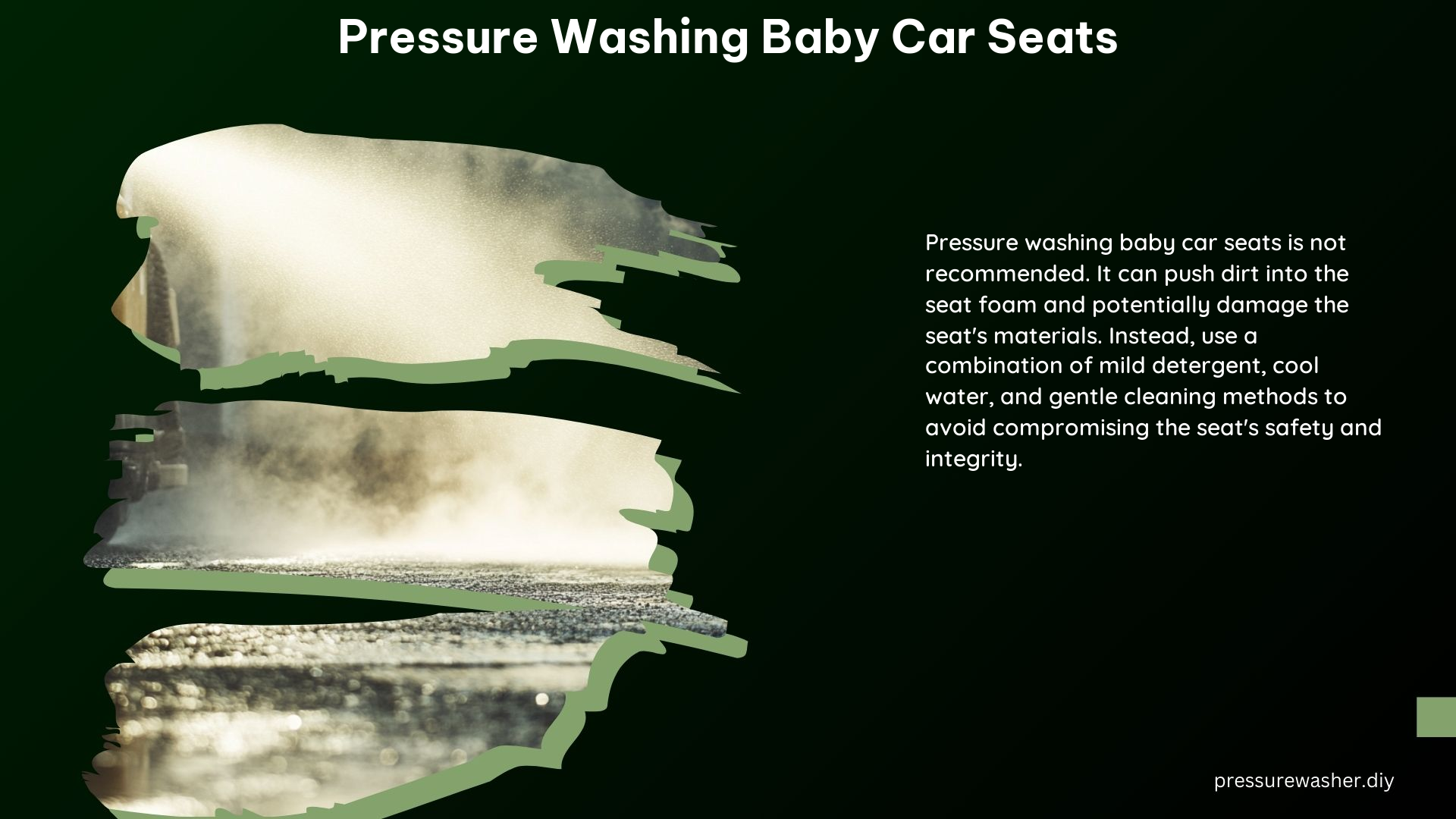Pressure washing baby car seats is a tempting solution for quickly and effectively cleaning these essential safety devices. However, this method is not recommended by experts due to the potential risks it poses to the structural integrity and functionality of the car seat. In this comprehensive guide, we will delve into the reasons why pressure washing should be avoided and explore the best practices for safely and effectively cleaning your baby’s car seat.
The Dangers of Pressure Washing Baby Car Seats
Safety Risks
Power washing can push dirt, debris, and contaminants deep into the foam and other components of the car seat, compromising its structural integrity and safety features. This can potentially weaken the seat’s ability to protect your child in the event of an accident. The high-pressure water can also damage the critical webbing and other essential parts, rendering the seat unsafe for use.
Manufacturer Guidelines
Most car seat manufacturers explicitly advise against using pressure washing or other harsh cleaning methods on their products. These methods can void the warranty and potentially render the seat unsafe, even if it appears to be clean on the surface. It is crucial to always consult the manufacturer’s instructions for proper cleaning and maintenance procedures.
Damage to Critical Components
The high-pressure water used in pressure washing can penetrate deep into the car seat, causing damage to the foam, webbing, and other critical components. This can compromise the seat’s ability to absorb impact and protect your child in the event of a collision. Additionally, the water can seep into the seat’s internal structure, leading to mold and mildew growth, which can further degrade the seat’s safety and functionality.
Gentle Cleaning Methods for Baby Car Seats

Wiping with Baby Wipes
One of the most effective and gentle cleaning methods for baby car seats is to use baby wipes. These gentle, moisturized wipes can effectively remove surface-level dirt, spills, and stains without damaging the seat’s materials or components.
Mild Soap and Cool Water
For a more thorough cleaning, you can use a mild, baby-safe soap and cool water. Avoid using hot water, as it can cause the materials to break down over time. Gently scrub the seat with a soft cloth or sponge, taking care not to submerge the entire seat in water.
Spot Cleaning
For heavily soiled areas, you can spot clean using a small amount of mild soap and a soft-bristled brush. Gently scrub the affected areas, taking care not to press too hard or use excessive water.
Drying the Seat
After cleaning, it is essential to thoroughly dry the car seat before reinstalling it in the vehicle. Allow the seat to air dry completely, or use a clean, soft towel to gently blot and pat the surface dry.
Professional Cleaning Services
If your baby’s car seat is heavily soiled or you’re unsure about the best cleaning methods, consider using a professional cleaning service that specializes in car seat cleaning. These services use gentle, safe, and effective methods to ensure that your car seat remains in optimal condition and continues to provide the necessary protection for your child.
Avoiding Damage to Car Seat Components
Harness Webbing
Never put car seat harnesses in the washing machine, as the agitation and heat can damage the webbing and reduce the seat’s effectiveness in an accident.
Harsh Chemicals and Abrasives
Avoid using harsh soaps, detergents, or abrasive materials when cleaning your baby’s car seat. These can compromise the seat’s safety features and potentially cause damage to the materials.
Steam Cleaning
Similarly, steam cleaning should be avoided, as the high heat and moisture can penetrate the seat’s internal components and lead to mold, mildew, and structural degradation.
Conclusion
Pressure washing baby car seats is not a recommended cleaning method due to the significant risks it poses to the seat’s safety and functionality. Instead, opt for gentle, manufacturer-approved cleaning methods, such as wiping with baby wipes, using mild soap and cool water, and spot cleaning as needed. If the seat is heavily soiled, consider using a professional cleaning service that specializes in car seat maintenance. By following these best practices, you can ensure that your baby’s car seat remains in optimal condition and continues to provide the necessary protection in the event of an accident.
